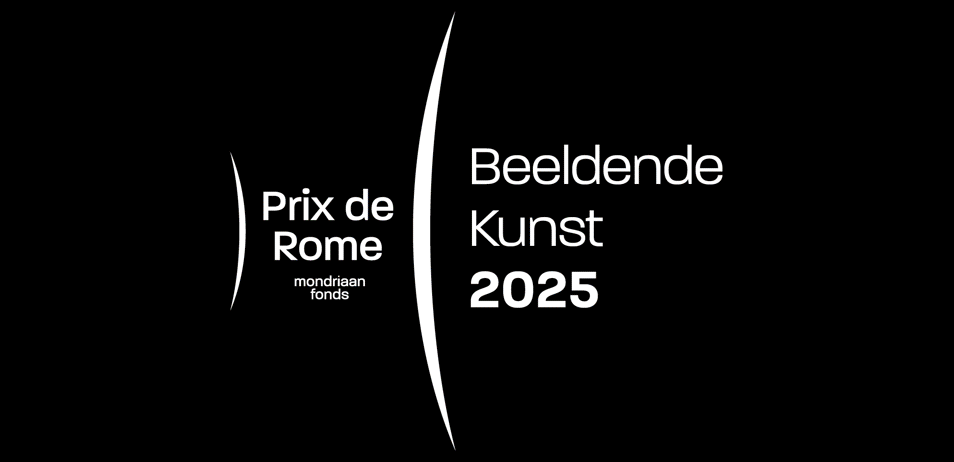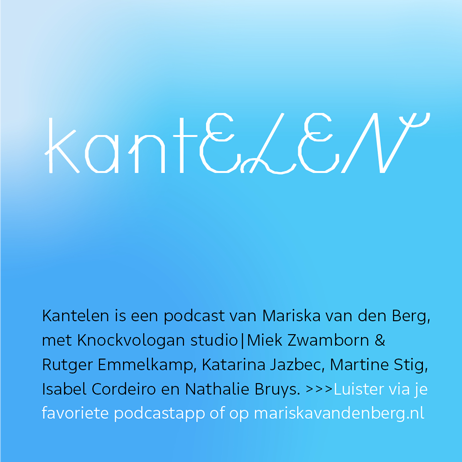Hoe we onze verhalen vertellen – afstuderen van de KABK in een rumoerig jaar
*English version below
In de herfst van 2018, een paar weken nadat bijna elke vrouw die ik ken ‘Me Too’ schreef op haar sociale media, raakte ik als student Beeldende Kunst aan de KABK in gesprek met een van de docenten. Het was de eerste keer dat we elkaar spraken en ik was geloof ik nogal gepassioneerd aan het woord over wat de impact van #MeToo zou kunnen zijn. Ongemakkelijk vroeg hij me na een poosje: “Nouja, maar hoe zit het dan met alle Goede Mannen?” Ik begreep niet zo goed wat hij daarmee bedoelde, zei hem dat het me wat complexer leek dan een kwestie van Goed of Kwaad. Niet veel later begon diezelfde leraar me te stangen – hij spotte dat ik zo’n ‘braaf meisje’ was (wilde ik niet ‘slecht’ zijn?) en tijdens een expositie begon hij publiekelijk te roepen hoe slecht mijn werk wel niet was. Een grote groep leraren stond erbij en keek ernaar.
Telkens als ik het gedrag van deze docent ter sprake bracht kreeg ik dezelfde reactie: zeker, de man was een beetje lomp, maar hij bedoelde er niets mee hoor. Eigenlijk was hij best wel een genie, of op zijn minst een goed mens, een Goede Man.
Toen pas begon ik te bevatten waar de vraag van die man indertijd eigenlijk over ging.
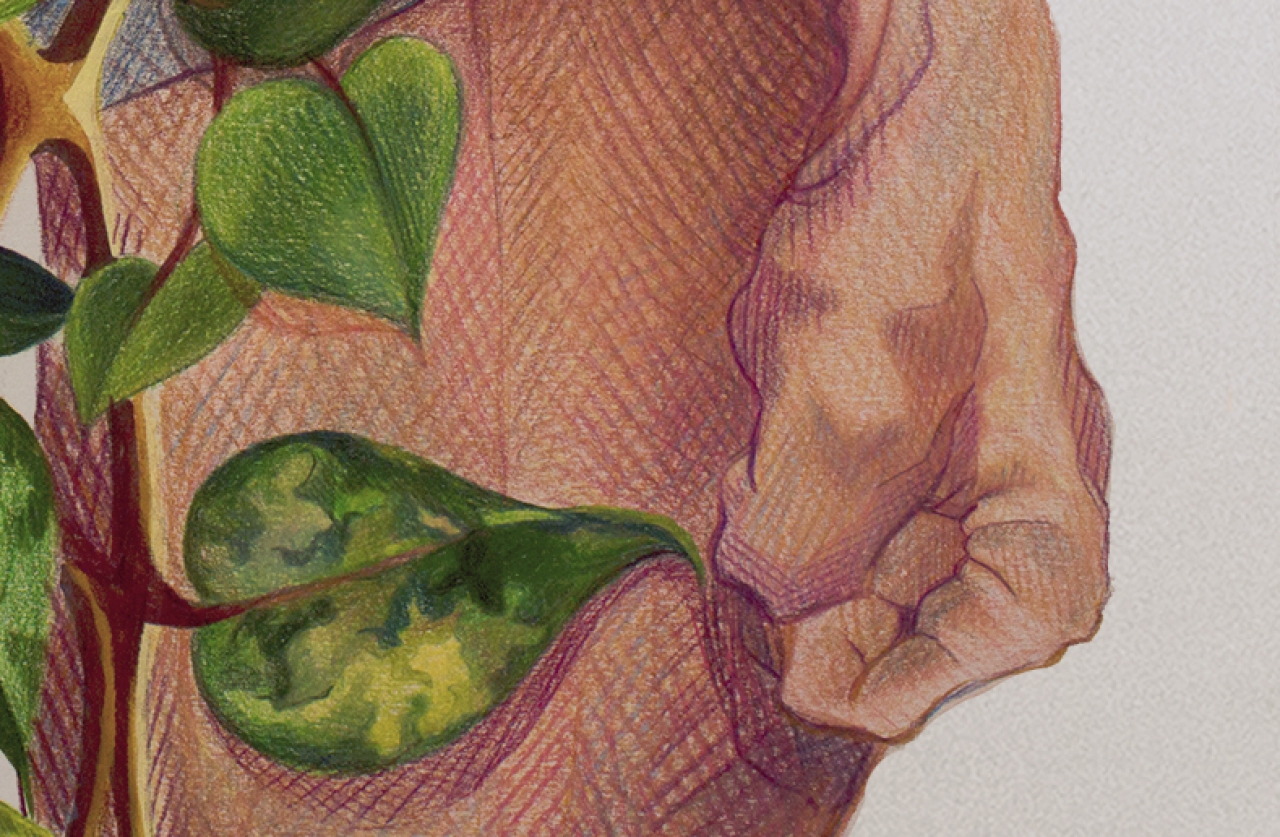
Drie jaar na dat gesprek, aan het begin van mijn eindexamenjaar, werd dezelfde docent door de KABK op non-actief gesteld. Deze beslissing volgde op een stormachtige kettingreactie: woedende posters aan de muren van de school, studentenprotesten, verontwaardiging op sociale media, met landelijke media-aandacht tot gevolg. Dit alles was het resultaat van het anonieme Instagram-account @calloutdutchartinstutes, waar van de ene op de andere dag verhalen over misbruik en seksisme in de Nederlandse kunstwereld en haar (onderwijs)instituten opdoken. Het account zelf was weer een reactie op een NRC-artikel van Lucette ter Borg en Carola Houtekamer waarin de Nederlandse kunstenaar en KABK-alumnus Andeweg werd ontmaskerd als een seksueel roofdier die ruim tien jaar lang stelselmatig vrouwen had misbruikt. In het artikel bekritiseerden de journalisten de KABK voor de laconieke reactie op het overvloedige bewijs van Andewegs geweld ten tijde van zijn studie.
Wij, het huidige cohort studenten, ontvingen voorafgaand aan de publicatie van het artikel een bericht van directeur Marieke Schoenmakers, waarin zij onomwonden liet weten dat de cultuur die in het artikel beschreven werd niet overeenkwam met die van de KABK van nu. Als reactie daarop brak de storm los.
Er bekroop me als student Beeldende Kunst een gevoel van verbijstering toen ik de verhalen op de Instagram-pagina las, precies zoals in de tijd dat #MeToo opkwam. Niet omdat het verrassend nieuws was (al leek dat wel zo te zijn voor sommige mannelijke medestudenten), maar omdat ik diep geraakt werd toen ik zag hoe mijn eigen verhalen verweven raakten met die van anderen. De samenvallende patronen riepen een beeld op van de onderlinge verbondenheid van onze wortels, diep onder de oppervlakte van de aarde.
Nog geen week na het verschijnen van de Instagram-pagina meldden de anonieme oprichters echter dat ze zouden stoppen met het delen van verhalen. Nu, zeven maanden later, is de pagina verwijderd.
In de maanden die volgden heb ik geworsteld om de contouren helder te krijgen van het systeem waarbinnen ik binnenkort een formeel diploma ga behalen, het zogeheten ‘gouden toegangsbewijs’ tot de kunstwereld. Voor mijn scriptie heb ik onderzoek gedaan naar de retorische trukendoos waarin de mythologieën over de kunstenaar als kwajongen (‘bad boy’), als genie, als Goede Man verankerd liggen. Ik noem deze culturele denkbeelden ‘constitutieve mythologieën’, omdat de overtuigingen en houdingen die erin besloten liggen een sociale werkelijkheid (re)produceren waarin bepaalde gedragingen toegestaan zijn terwijl andere gedragingen taboe blijven. Het veroorzaakt een materiële werkelijkheid waarin een schreeuwende docent richting een student over haar ‘verschrikkelijke kunst’ kan worden afgedaan als iets wat er nou eenmaal bij hoort, want ‘studenten moeten eerst gebroken worden’ en sommige docenten zijn ook gewoon ‘bad boys’. Binnen de logica van zulke kunstenaarsmythes hoeft het overduidelijk misbruikende karakter van zulk gedrag niet erkend te worden. Deze werkelijkheid heeft, zoals het externe onderzoek van Bezemer & Schubad naar de huidige cultuur op de KABK opmerkt, al bij veel van de respondenten traumatische gevoelens achtergelaten: “Er wordt gesproken over nachtmerries, over stemmen die nog doorklinken en over therapie die gevolgd moest worden”(2021, 7).
In dit artikel wil ik ingaan op de verhalen en mythologieën die aan de basis liggen van onze ideeën over kunstenaarschap, hoe ze misbruik mogelijk maken en hoe ze tegenstemmen het zwijgen opleggen, en aanscherpen wat dit voor ons als jonge, afstuderende kunstenaars betekent.
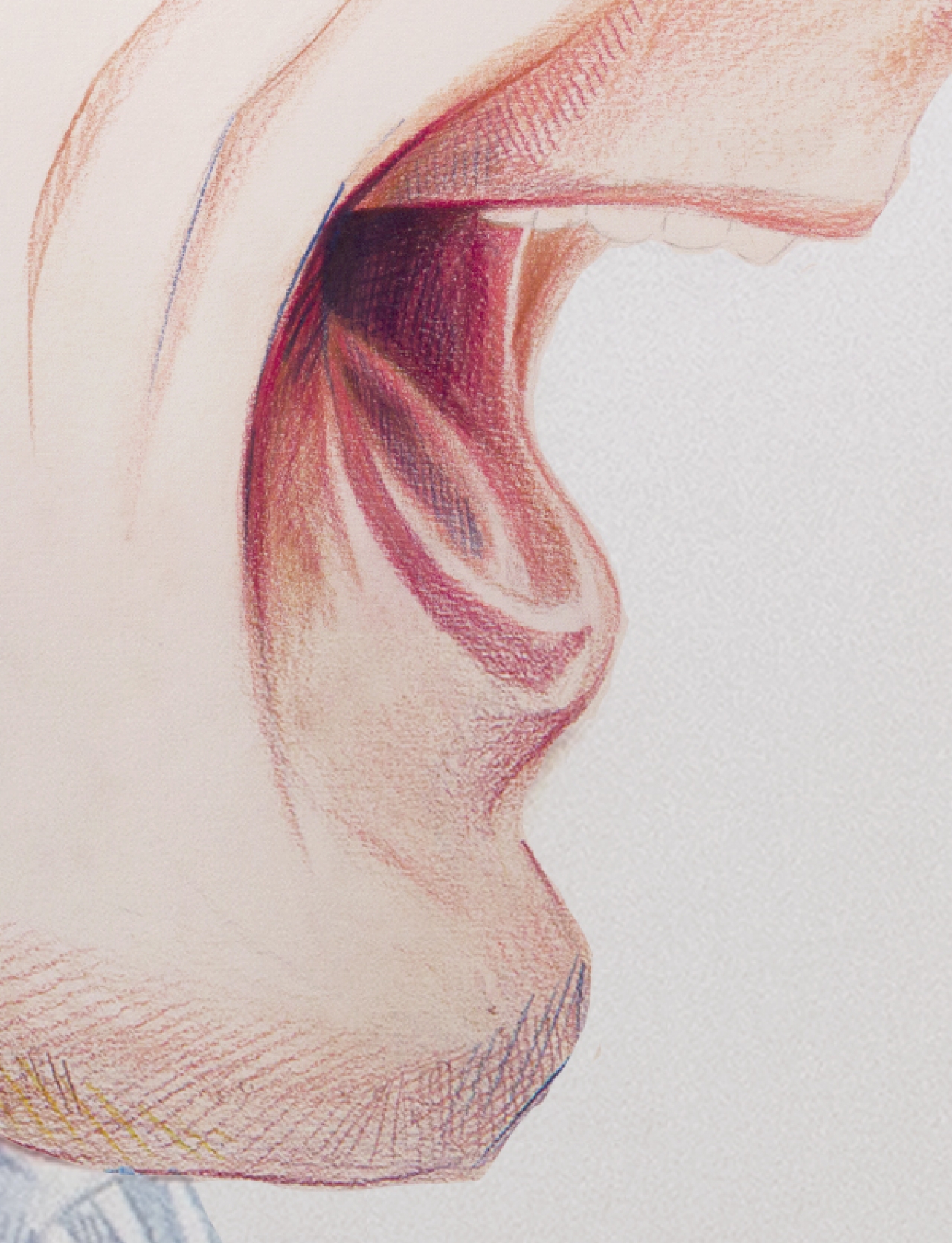
Kunstenaarsmythes
Over de achterhaalde opvatting van de mannelijke kunstenaar als bad boy is al eindeloos veel geschreven, maar helaas begint het verhaal daar nog steeds mee. Uit het NRC-artikel blijkt immers dat leidinggevenden van Nederlandse kunstinstituten als KABK, Stroom, Rijksakademie en Galerie van Zomeren de bad boyfantasie nog steeds in ere hielden, lang nadat dit idee doodverklaard had moeten zijn. Ze waren zich bewust van Andewegs geweld, maar beschouwden zijn gedrag als een intrinsiek onderdeel van zijn getroebleerde artistieke ziel. De culturele fantasie van de bad boy kruist hier met de mythe van genialiteit. Zo ontstaat een geromantiseerd verhaal waarin geweld kan worden gekaderd als een middel tot een hoger doel – de kunstenaar is blijkbaar zó ongelofelijk gepassioneerd dat dit leidt tot Hoge Kunst, maar helaas af en toe ook tot een blauw oog.
Er is een overvloed aan mythevorming rondom de veronderstelde relatie tussen geweld en genialiteit. Zoals in het Bezemer & Schubad rapport wordt opmerkt is op de KABK tot op de dag van vandaag nog altijd de culturele norm aanwezig dat luid en provocerend gedrag loont (7). Hieraan ligt nog een andere mythe ten grondslag – het idee dat ‘wij kunstenaars’ werken volgens een andere set normen en waarden, waarin meer zou moeten kunnen in het belang van de Kunst. Ook dit melden Bezemer & Schubad (27). Deze kunstenaarsmythes zijn een voedingsbodem voor misbruik, een speelveld voor onze bad boys.
In onderzoek naar hoe het mythische archetype van de bad boy wordt gereproduceerd in populaire cultuur, wijzen de culturele analisten Gopaldas & Molander (2019) erop dat het gedrag van een lastige, opstandige jongens kan worden geïnterpreteerd als tekenen van een positieve jeugdige mannelijkheid (‘hij is bevrijd en rebels!’) of als een giftige. Deze beeld(ver)vorming ligt vrijwel volledig in handen van degenen die de macht hebben om hem in een bepaald kader te plaatsen. In haar onderzoek naar institutionele klachtencultuur schrijft de academica Sara Ahmed: “Zoveel klachten worden geblokkeerd omdat er is geïnvesteerd in personen, programma’s en projecten. Klagen is stuiten op een muur van belangen(1).”
Klachten over Andeweg waren er in overvloed, maar het lijkt erop dat al te veel mensen belang hadden bij zijn vermeende genialiteit. Voor zijn galerie was dit motief vermoedelijk vooral economisch, maar uit het NRC artikel blijkt dat verschillende docenten van de KABK werkelijk overtuigd waren van het romantische idee van de bad boy en zijn grillen. Misschien omdat ze dit ook in zichzelf wilden herkennen.
De journaliste Megan Garber noemt de investering in deze mythologie genius bias (genie-vooringenomenheid). Ze wijst erop hoe genialiteit bijna als een architectuur functioneert, en schrijft:
“We hebben onze kunst georganiseerd rond haar potentieel; we hebben onze economie georganiseerd rond haar belofte. We hebben ons georiënteerd op het licht van haar sterren – en als die flikkeren, al is het maar even, verliezen we onszelf. En: We verdedigen onszelf. We houden onszelf voor de gek. We kiezen ervoor om de constructie van het firmament niet in twijfel te trekken. Dat is zoveel makkelijker.”
Deze desillusie blijkt uit de reactie wanneer er beschuldigingen van misbruik door onze hedendaagse geniale kunstenaars opduiken. Garber merkt op dat wanneer ze schrijft over mannen als Roman Polanski, Woody Allen, Louis C.K, Chuck Close of David Foster Wallace haar inbox onmiddellijk wordt overspoeld, “met bittere verontwaardiging, met boze verdedigingen van de status quo: Maar zijn films zijn zo goed. Zou jij zulke films kunnen maken? Geef je dan niets om kunst? Bitch.”
De vraag die hier opdoemt is het Death of the Author dilemma – kunnen we, moeten we, kunst scheiden van de kunstenaar? Dat vroeg de literatuurcriticus Roland Barthes zich ook af, toen hij in de jaren zestig het theoretische argument introduceerde om de betekenis van het kunstobject los te koppelen van de intenties en biografie van de auteur. Ironisch genoeg deed hij dit juist om de hardnekkige invloed van de genius bias teniet te doen: als we niks weten over de auteur, kunnen we ook niet beïnvloed raken door diens culturele status als zogeheten ‘genie’. Barthes’ argument lijkt echter in de loop van de tijd te zijn verdraaid, aangezien de critici die nu oproepen tot een scheiding van kunst en kunstenaar dit toch vooral doen vanuit het perspectief van pleiten vóór genialiteit – ‘zijn werk is te goed!’. Aangezien de genialiteit van de kunstenaar dus reeds is vastgesteld voordat verhalen over geweld en misbruik de kop opsteken, is de poging die daarna wordt ondernomen om kunst en kunstenaar te scheiden in feite helemaal niet zoals Barthes voorstelde. Integendeel, het is eerder een poging om delen van de biografie die ons niet aanspreken kunstmatig te scheiden van de delen die dat wel doen, zoals over hoe geniaal ze wel niet zijn. Zo kunnen we onze geliefde kunstenaarsmythes bewaren.
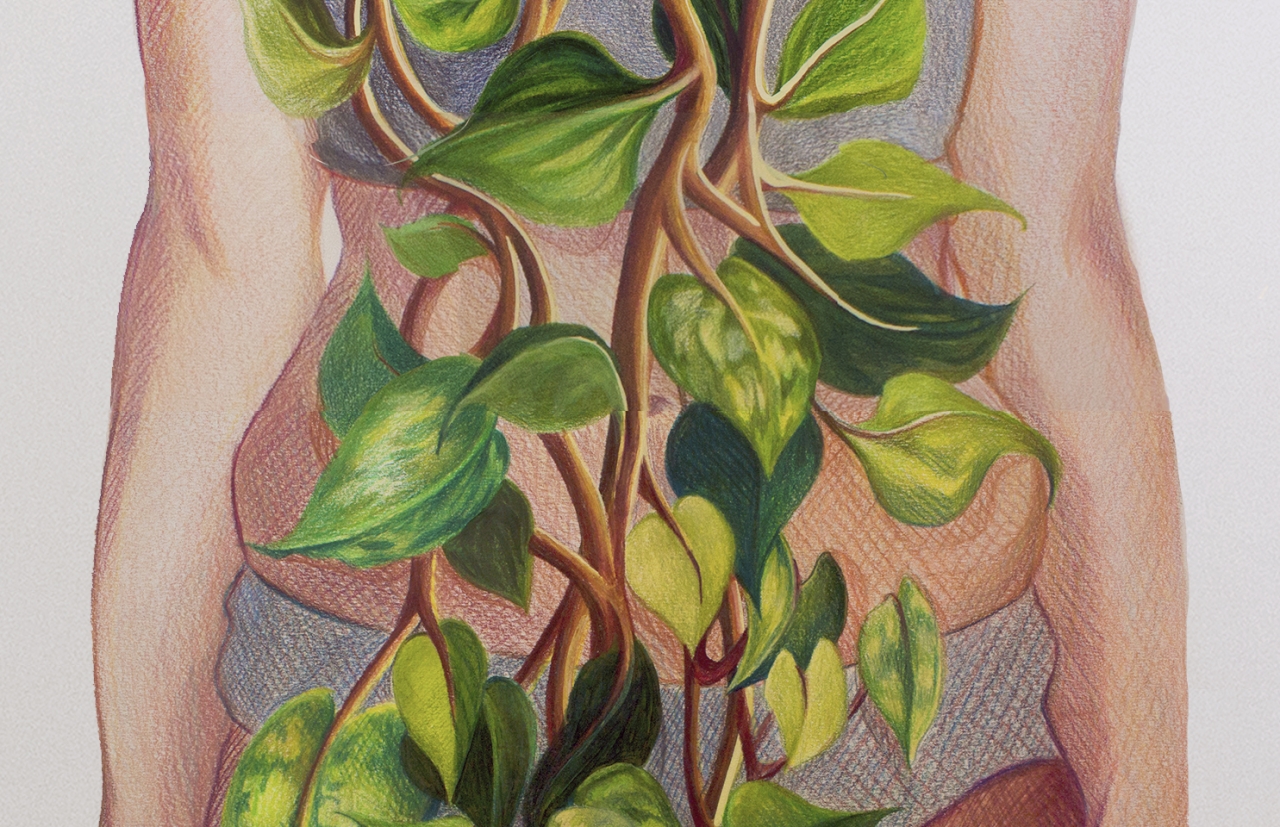
De grote stilte
Dit brengt ons terug bij de KABK. Toen de @calloutdutchartinstitutes Instagram online kwam, ontvouwde zich een soortgelijk discussie onder bijna elke bericht. Aan de ene kant was er iemand die eiste dat aan deze ongegronde, anonieme berichten onmiddellijk een einde werd gemaakt omdat ze zeer schadelijk zouden zijn voor de mannen die op de pagina werden genoemd, die verklaarde dat er een heksenjacht aan de gang was, of de behoefte voelde om het verhaal te bekritiseren omdat het niet erg genoeg zou zijn om het te plaatsen. Aan de andere kant was er iemand die stelde dat het steeds moeilijker werd om de onschuld van de mannen in kwestie te verdedigen, terwijl gedetailleerde verhalen over hen zich opstapelden. Waar één verhaal op zichzelf weinig kracht had, vormden ze samen een plausibele bron.
Dit betekent echter niet dat het publiekelijk aan de schandpaal nagelen ethisch niet problematisch is, juist als het ons uiteindelijke doel is om een veiligere omgeving te creëren. Evenmin moet het niet als enige middel worden gebruikt om gerechtigheid en emancipatie te bereiken. Maar voordat we zover zijn moeten we eerst het dominante narratief dat de status quo beschermt omverwerpen – en alleen een luide collectieve schreeuw kan haar grondvesten doen schudden.
Toen die schreeuw geregistreerd werd, begonnen allerlei mechanismes deze stemmen het zwijgen op te leggen. Na een week schortte het Instagram-account de activiteiten op, vermoedelijk ten gevolge van dreigende rechtszaken, aangezien een docent aan een andere Nederlandse kunstacademie inderdaad politie naar de huizen van zijn studenten heeft gestuurd. (2) Geallieerde Instagrampagina’s zoals @art.goss, @not.a.playground, @no.more.later en @kabkstudentunion begonnen hierop studenten aan juridische bijstand te helpen. Het geeft aan waarom de pagina anoniem moest zijn, en waarom dit soort initiatieven meestal alleen onder de radar via fluisternetwerken opereren.
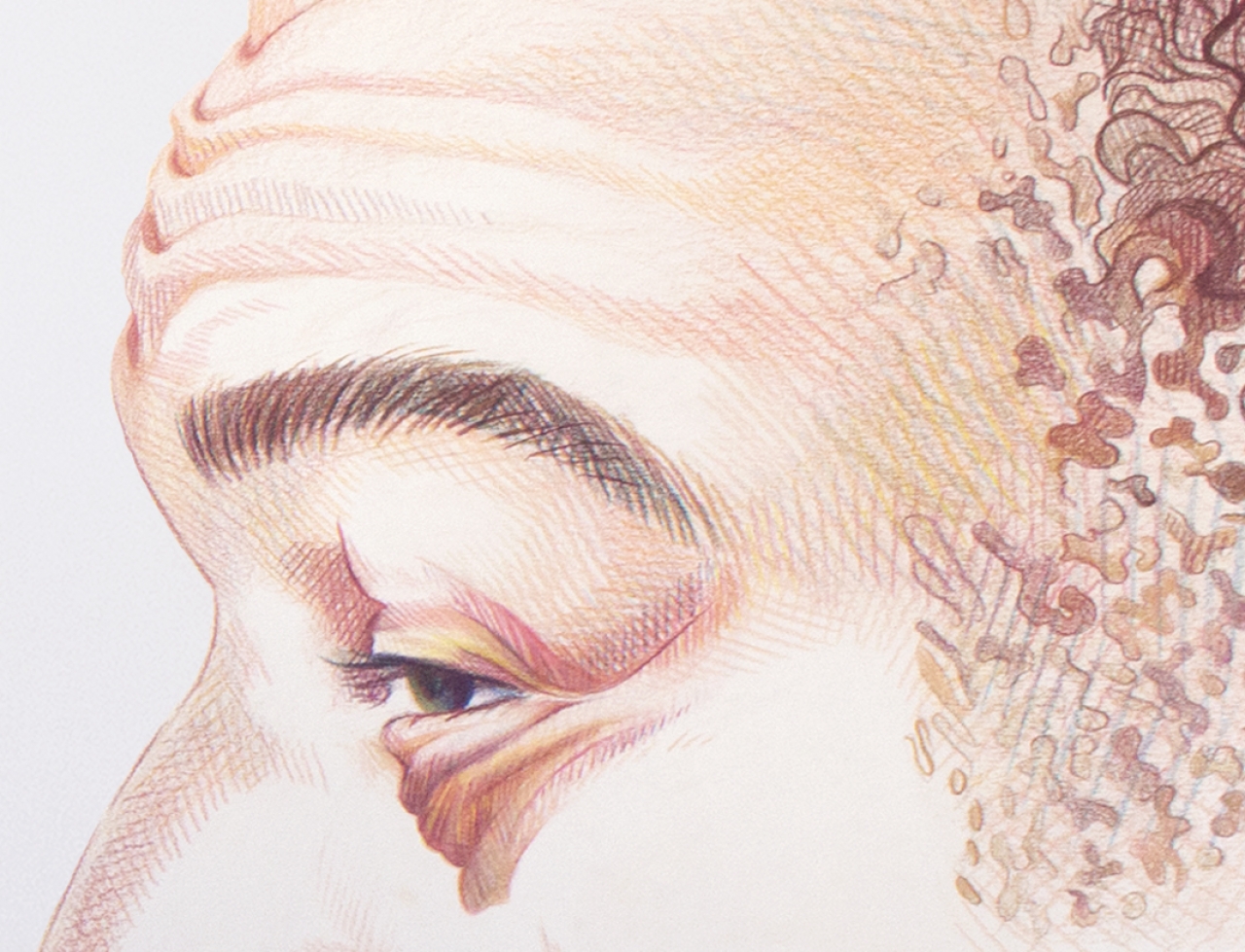
Op de KABK verschenen van de ene op de andere dag beveiligers aan de balie om journalisten buiten de deur te houden. Binnen de afdeling Beeldende Kunst werden online bijeenkomsten georganiseerd waarbij de coördinator aanwezig was over wie verschillende verhalen waren geplaatst. Studenten die daar iets van zeiden, werden weggewuifd. In de vergadering kregen we te horen dat de Instagram-verhalen niet in overweging zouden worden genomen omdat ze niet via de officiële klachtenprocedures waren binnengekomen. Zoals de Engelsen zo mooi zeggen zaten er die dag twee dikke olifanten bij ons in de kamer: de coördinator, en de collectieve wetenschap dat sommigen van ons al jaren probeerden te klagen over de online genoemde docenten.
Dit is hoe de status quo zichzelf voor de gek houdt, dit is de catch-22 voor slachtoffers: anonieme beschuldigingen worden niet serieus genomen, terwijl officiële procedures ondoorzichtig worden gehouden, en eisen dat je openlijk je naam vermeldt, terwijl de persoon tegen wie je een klacht indient nog steeds je docent is. En dus blijft het bij fluisteringen.
Dergelijke mechanismen van stilte zijn fundamenteel om onze kunstenaarsmythes in stand te houden. Om ze te valideren moet alles wat haar tegenspreekt worden gewist. Dit proces ontstaat niet alleen door structureel oneerlijke machtsverhoudingen – in feite vindt het meeste uitwissen, het meeste geweld, plaats op het niveau van persoonlijke retoriek. Toen ik bij andere docenten begon over de docent die me bespotte, was de reactie bijna universeel: tja, beetje lomp, maar hij bedoelt het wel goed hoor. Zo doet hij toch tegen iedereen. Niks persoonlijks, niks van aantrekken. Hij is uiteindelijk wel een goed mens, een Goede Man. Ahmed noemt dit de aanname van welwillendheid (‘The Goodwill Assumption’). Ze schrijft hierover: “de rechtvaardiging van geweld is hoe dat geweld wordt herhaald. De rechtvaardiging van geweld is dat geweld”. Geweld gewikkeld in goede bedoelingen is het moeilijkst te herkennen.
In reactie op het NRC-artikel publiceerde een groep docenten een artikel in Metropolis M (2020), waarin ze stelden dat ze zich niet in staat voelden om iets tegen misbruik te ondernemen als ze er getuige van waren, vanwege hun eigen precaire positie binnen hun instellingen. De veronderstelling in het stuk luidt dat de docenten bij vaste contracten meer betrokken zouden zijn. Hoewel ik niet twijfel aan de schadelijkheid van deZZP-economie (gig economy), noch aan de mogelijke repercussies die ze vrezen (zoals inderdaad blijkt uit de anonimiteit van hun artikel), vraag ik me toch af of deze zaken echt zo causaal zijn als de docenten beweren.
Ahmed schrijft namelijk: “om deel te kunnen blijven van de groep moet je wegkijken van het geweld”. Hiermee bedoelt ze niet alleen wegkijken van letterlijk fysiek geweld, maar ook het geweld dat plaatsvindt in de handeling en retoriek van het wegkijken zelf. Dit is het fundament van hoe kunstenaarsmythes voortbestaan – wegkijken van tegenstemmen totdat ze zwijgen, zodat de coherentie van het verhaal en de sociale, materiële wereld die eraan verbonden is niet verstoord raken. Zodat men erbij blijft horen.
Het geweld van wegkijken gebeurt op allerlei manieren: door het blijven vereren van de artistiek genie volgens de ‘Author is Dead’-logica; door het in stand houden van andere normen voor kunstenaars; door anonieme klachten als heksenjacht af te schilderen; door het vriendelijk afwijzen van klachten van studenten onder het mom van goede intenties, of door te suggereren dat het misschien eigenlijk wel goed is om op de kunstacademie wat lompheid tegen te komen want dan heb je dat maar vast geleerd voor de ‘Echte Kunstwereld’. Deze verraderlijk normatieve retoriek is een fundamenteel onderdeel van de instandhouding van onze ideeën over kunstenaarschap. Het vereist volgens mij vooral meer moed van onze docenten om buiten de sociale cohesie te gaan staan en deze samen te ontmantelen.
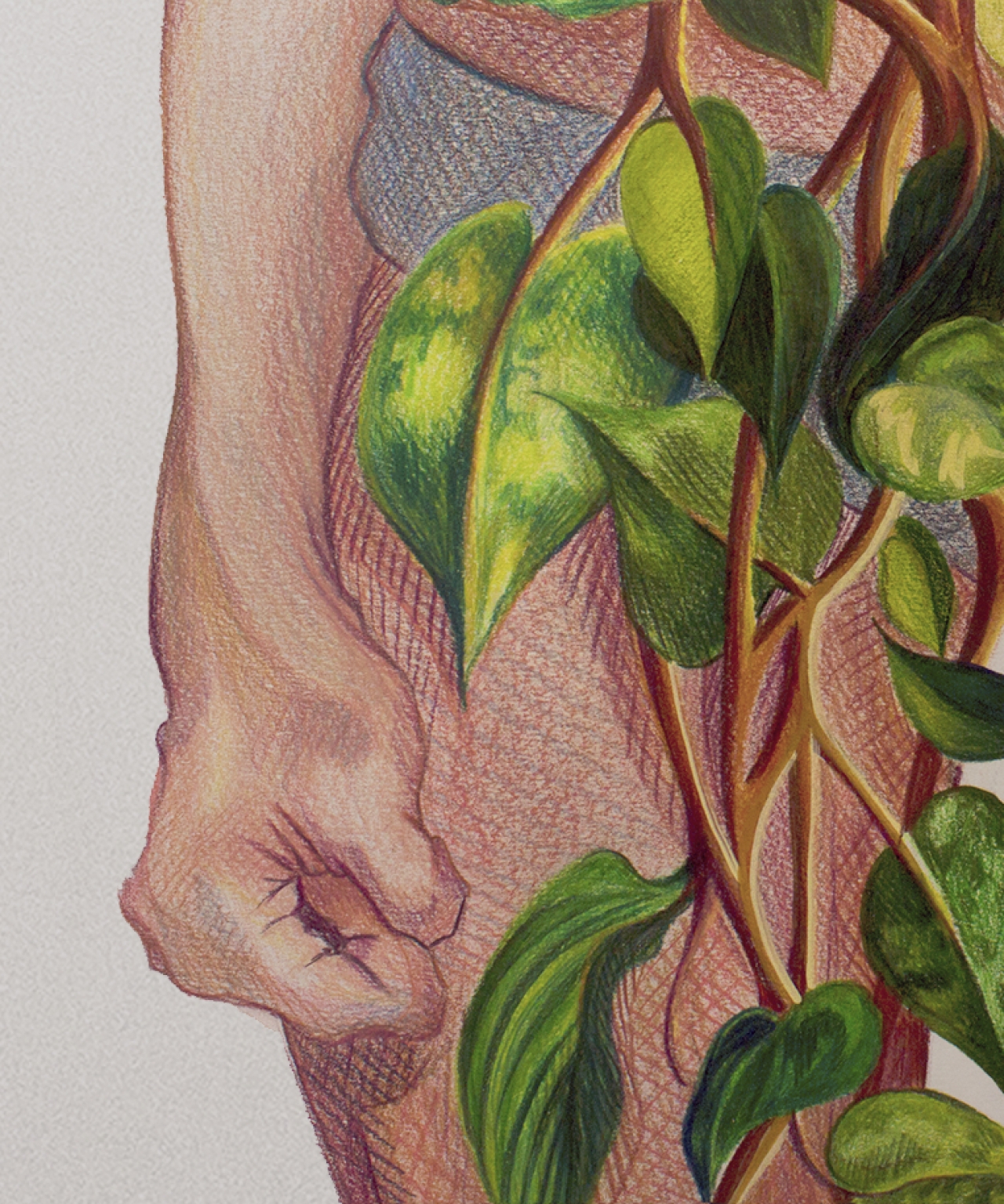
Ik pleit er dus voor dat we als kunstwereld zo kritisch mogelijk blijven over het verhaal van erbij-horen, van insluiting en uitsluiting. In mijn gesprekken met docenten zie ik het nieuwe verhaal dat zich aan het vormen is: ‘de geschorste persoon maakte geen deel uit van onze afdeling, dus dit was eigenlijk geen probleem van Ons, toch? Het lag bij Hem. Hij was altijd een beetje vreemd, eigenlijk was hij nooit een deel van Ons. Heeft een van Ons jou ooit iets aangedaan? Ik ben ervan overtuigd dat geen van Ons dat zou doen, hoor’.
Dit is hoe afwijkende verhalen tot zwijgen worden gesmoord, dit is hoe we onszelf voor de gek houden
In het rapport van Bezemer & Schubad stellen de onderzoekers bovendien expliciet dat ze geen onderzoek hebben gedaan naar individuele personen (Bezemer & Schubad, p. 3), maar uit een recente interne email naar medewerkers en studenten blijkt dat dit nu intern wordt aangegrepen als bewijsvoering voor het idee dat er helemaal geen klachten zouden zijn, en de docenten dus gerehabiliteerd kunnen worden. Een eerdere brief van de studenten met de vraag om officieel vervolgonderzoek om de blinde vlek van het Bezemer & Schubad rapport op te vullen lijkt hierbij te worden genegeerd, en in plaats daarvan wordt in de email een alternatief verhaal opgeroepen: als er geen klachten zijn, dan zijn het toch vooral de docenten die hier het slachtoffer zijn geworden. Zo sluiten we in, en zo sluiten we uit.
De vraag hier blijft: wiens veiligheid, wiens versie van het verhaal, zal op de lange termijn worden gewaarborgd.
Klik hier voor de website en hier voor de Instagram van Laurence Herfs
(1)Ahmed brengt eind dit jaar haar boek Complaint! uit, en deelde tijdens het schrijfproces haar observaties op haar blog Feminist Killjoys. Zie: en https://www.saranahmed.com/.
(2)Op het Instagram account art.goss werd gemeld dat “Op vrijdagavond 27 november is een student van @designacademyeindhoven gevraagd om naar het politiebureau te komen in verband met een reactie die is heeft geplaatst op @calloutdutchartinstitutions. Op het politiebureau werd onder grote druk (dreiging van een smaadzaak) gevraagd om de reactie onder een post te verwijderen. Die reactie luidde: ‘[naam docent] moet gewoon weg bij de Design Academy’.” Bron:
Bronnen
- Ahmed, S. 2020. Feminist Killjoys. https://feministkilljoys.com/
- Art.goss [@Art.goss]. 2020, November 29. Prohibiting Criticism. Afkomstig uit: https://www.instagram.com/p/CILXSLiFPx0/?utm_source=ig_web_copy_link
- Barthes, R. 1967. “The Death of the Author” Aspen 5-6.
- Bezemer & Schubad. 2021. Rapportage Cultuuronderzoek. https://www.kabk.nl/storage/documents/Rapportage-cultuuronderzoek-KABK.pdf
- Garber, M. 2018. “David Foster Wallace and the Dangerous Romance of Male Genius.” The Atlantic. https://www.theatlantic.com/entertainment/archive/2018/05/the-world-stil…
- Gopaldas, A., and Molander, S. 2020. “The Bad Boy Archetype as a Morally Ambiguous Complex of Juvenile Masculinities: The Conceptual Anatomy of a Marketplace Icon.” Consumption Markets & Culture 23 (1): 81–93. https://doi.org/10.1080/10253866.2019.1568998.
- Ter Borg, L., Houtekamer, C. 2020. “Hoe een kunstenaar carrière maakt onder aanhoudende beschuldigingen van aanranding en verkrachting.” NRC. https://www.nrc.nl/nieuws/2020/10/30/hoe-een-kunstenaar-carriere-maakt-o…
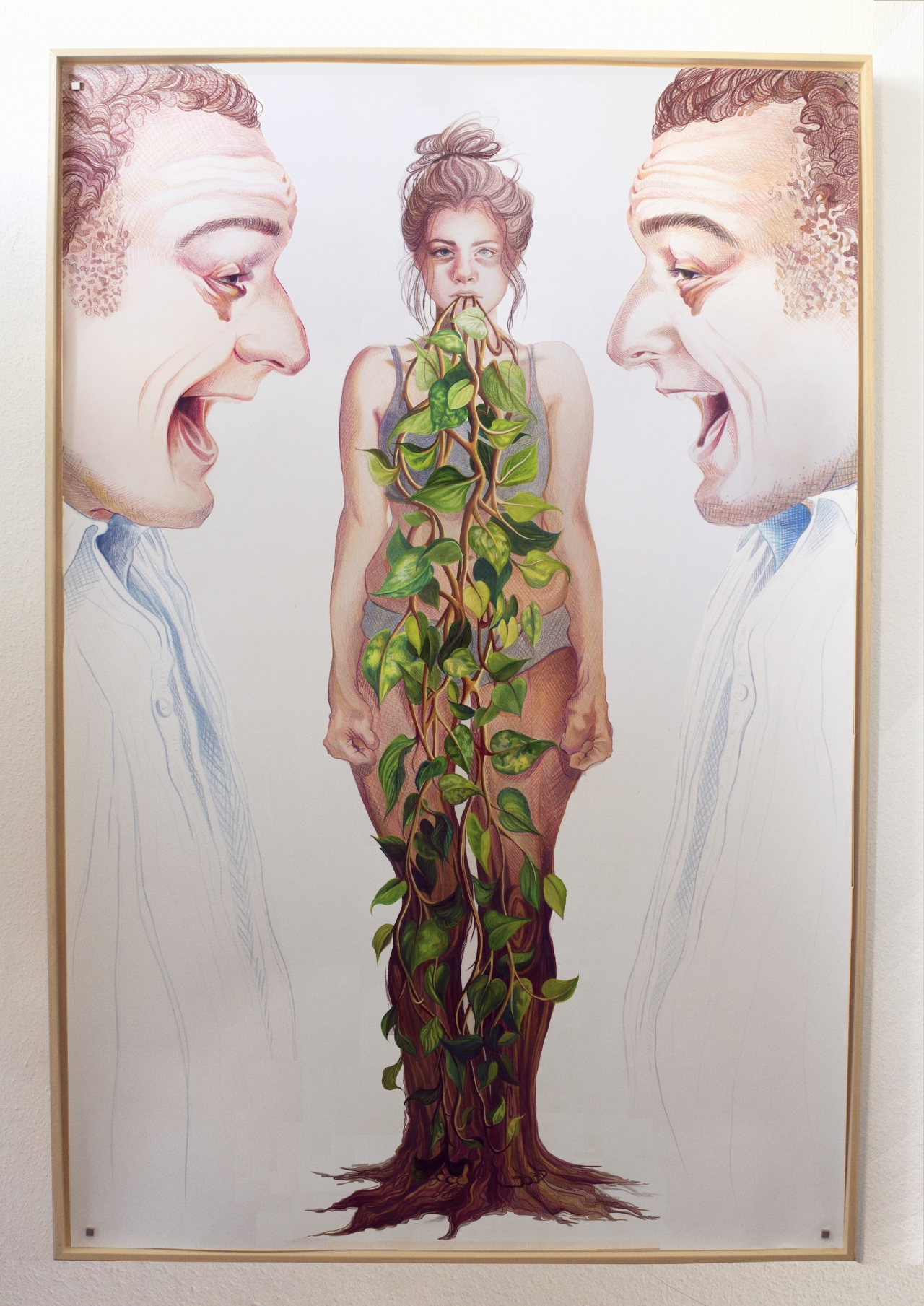
———————————————————–
How we will tell our stories – graduating from KABK in troubled times
In the fall of 2018, a few weeks after virtually every woman I knew had posted ‘Me Too’ on her social media, I found myself in conversation with a KABK teacher. It was our first time meeting, and I believe I was talking about the potential impact of #MeToo pretty passionately. Awkwardly, he asked me: “Well, but what about all the Good Men?”. I wasn’t sure what he meant, but told him surely this was more complicated than Good or Bad. Later, that same teacher started harassing me, taunting me about being such a ‘good girl’ (didn’t I want to be ‘bad’ instead?) and publicly yelling at me about how terrible my art was at an end-of-year show. A large group of teachers was present for this. None spoke up.
Whenever I mentioned the teacher’s behavior, I was given the same reply: yeah, the man was a bit boorish, but he didn’t mean anything by it. Underneath he was surely a Good Man. Something of a Genius, really.
I slowly began to understand what the man’s question had been about.
Three years after that conversation, at the start of my graduation year, this teacher was put on probation by the KABK. It was part of a chain-reaction that was going off in the school: furious posters, student protests, social media outrage, leading to national media attention. All of this was the result of an anonymous Instagram account called @calloutdutchartinstutes, on which stories of abuse and sexism had started appearing overnight. The account itself was a reaction to yet another bombshell that had dropped right before: an NRC article written by Lucette ter Borg and Carola Houtekamer which exposed the Dutch artist and KABK alumnus Andeweg as a predator who had systematically abused women for well over a decade. In the article, the journalists criticized the KABK for its lackluster response to the ample evidence of Andeweg’s violence at the time of his study. Us present-day students received a message from director Marieke Schoenmakers ahead of the NRC article dropping, letting us know in no uncertain terms that the culture described in the article did not reflect that of KABK today. In response came the uproar.
As a current student of the Fine Arts department, seeing the stories accumulate on the Instagram page left me with a feeling of astonishment similar to when #MeToo began trending. Not because it was surprising (though for some of my fellow male students it certainly seemed to be), but because I was deeply moved to see my stories interweave with the patterns of others. Seeing those stories together recalled an image of the interconnectedness of our roots, hidden deep underneath the surface of the earth.
Not a week after its emergence however, the anonymous founders reported they would stop sharing stories. Now, seven months later, the page has been deleted.
In the months that followed I’ve grappled to understand the contours of this world I’ll soon receive a formal diploma within, my supposed ‘golden entry-ticket’. In the thesis I wrote on the topic, I examined the rhetorical trickbox surrounding the mythologies of the artist as bad boy, as genius, as Good Man. I call these cultural images ‘constitutive mythologies’, because the beliefs and attitudes held within them (re)produce a social reality in which particular behaviors continue while others remain taboo. It produces a material reality for those studying at KABK in which a teacher yelling at a student that their art is terrible can be interpreted as par for the course, because ‘students first need to be broken’ and some teachers are just ‘bad boys’ too. Within such a story, the obviously abusive nature of these acts does not need to be recognized, despite the fact that, as the external research into the current KABK culture commissioned by Bezemer & Schubad notes, it has left many of its respondents “feeling traumatised and mentioning nightmares, voices that they can still hear echo in their minds, and therapy” (2021, 7).
In this article, I want to hone in the stories that enable and the mechanisms that silence, and what this means for us students.
Artist-myths
While an exhausting amount has already been written about the outdated notion of male artists as ‘bad boys’, this is unfortunately still where the story begins. From the NRC article it is evident that people running Dutch art institutes like KABK, Stroom, Rijksakademie and Galerie van Zomeren still upheld the bad boy fantasy long after it should have been declared dead. They were aware of Andeweg’s violent behavior, but considered it an innate part of his troubled artistic soul. What happens here is that the cultural fantasy of the bad boy intersects with the myth of artistic genius. This, in turn, allows for a romanticized story in which violence can be framed as a means to an end – the artist is simply so utterly passionate it leads to Great Art, as well as the unfortunate occasional black eye.
There is plenty of precedent for the mythification of the supposed connection between genius and violence. As the Bezemer & Schubad report notes, the norm of being loud and provocative leading to praise is something that continues at KABK today (7). At the heart of this lies an even more fundamental myth – the notion that ‘we artists’ somehow operate by a different set of norms and values, in which more should be possible for the sake of Art. This too the Bezemer & Schubad report detects at KABK (27). This artist myth is a breeding ground for abuse, a playing ground for our ‘bad boys’.
In research done into how the archetype of the bad boy is culturally (re)produced, media analysts Gopaldas & Molander point out that a young, unruly man’s behavior can either be interpreted as signs of a positive juvenile masculinity (‘he is liberated and rebellious!’) or a toxic one (2019, 4). This framing lies squarely in the hands of those who hold the power to frame him. In her research into institutional complaint-culture, the scholar Sara Ahmed writes, “so many complaints are blocked because of people’s investments in persons, in programmes, in projects. To complain is to encounter a wall of investment.” (1) Complaints about Andeweg were abundant, but it seems like too many were too invested in his supposed genius for it to matter. For his galleries this motive was economic, while at KABK there seems to have been several teachers who were genuinely romantically invested in the notion of bad boy antics. Perhaps because they wanted to recognize it in themselves as well.
The journalist Megan Garber calls investment in this mythology the genius bias. She points out how genius functions almost like an architecture, writing:
“We have organized our art around its potential; we have organized our economy around its promise. We have oriented ourselves according to the light of its stars—and so when they flicker, even momentarily, we lose ourselves. And: We defend ourselves. We delude ourselves. We choose not to question the makeup of the firmament. It’s so much easier that way.”
Testament to this voluntary delusion is the reaction whenever allegations of abuse by our contemporary genius artists come to light Garber points out that whenever she writes about men like Roman Polanski, Woody Allen, Louis C.K, R., Chuck Close or David Foster Wallace, her inbox is instantly flooded, “with bitter indignation, with angry defenses of the status quo: But his movies are so good. Could you make movies like that? Don’t you care about art? Bitch.”
The question that looms here is the Death of the Author dilemma – can we, should we, separate the art from the artist? The literary critic Roland Barthes asked himself much the same in the sixties, when he put forward the theoretical argument that the meaning of the art object should be completely detached from the intentions and biography of the Author. Ironically, Barthes did so to undo the persistent power of the genius bias: if, after all, we have no knowledge of the author, we can’t be influenced by any idea about him being a genius either. Barthes’ argument seems to have twisted over time however, as the critics now calling for a separation of art and artist do so from the perspective of arguing for genius – ‘his work is just too good!’. Having already established the genius of the author ahead of stories of abuse emerging, the effort made to separate art and artist afterwards is in fact not at all like Barthes proposed. Rather, it is an effort to artificially separate the parts of the biography that that aren’t appealing from the ones that are. This is how we preserve our beloved artist myths.
The stories that silence
This brings us back to the KABK. When the @calloutdutchartinstitutes Instagram emerged, a similar debate unfolded between people under almost every post. On the one side would be someone demanding this was stopped at once, arguing that this kind of unfounded, anonymous posting was a deeply harmful act to the men being called out on the page, decrying witch hunt, or even just feeling the need to criticize the story for not being ‘bad enough’ to be posted. On the other would be somebody arguing that it was becoming increasingly harder to defend the innocence of the men in question, as detailed stories of them piled up. While one story on its own carries little power, together they become a plausible source. This is not to say that public shaming is not ultimately ethically problematic if our collective goal is to move toward a safer environment, nor that it should be the only tool wielded to bring forth justice and emancipation. But before we can get to that point we must first override the dominant narrative, and her pillars only seem to shake through a great, collective cry.
Mechanisms of silencing began to churn the moment that scream was registered. After a week, the Instagram account suspended activity. This is likely due to threats of lawsuits, as a teacher from another Dutch art academy indeed has sent police to his students’ houses. (2) Thereupon, allied Instagram pages such as @art.goss, @not.a.playground, @no.more.later and @kabkstudentunion began to help students obtain legal support. However, it exemplifies precisely why the page had to be anonymous in the first place, and why these kinds of initiatives usually only exist under the radar via whisper networks.
At the KABK, guards appeared at the front-desk overnight to keep journalists off of the premises. Within the Fine Arts department, online meetings were organized which had the coordinator present who had several stories about him posted. Students who sought to address it were brushed off. In the meeting, we were told the Instagram stories would not be taken into consideration since they were not made via official complaint procedures. Two big fat elephants sat in the room with us that day – the coordinator, and the knowledge that some of us had been complaining about the called-out teachers for years. Here is how the status quo deludes itself into looking away, here is the catch-22 for victim of harassments: anonymous complaints aren’t taken serious, while official procedures are kept opaque but demand you to openly put your name down while the person you are filing against is still your teacher. And so there are only whispers.
Such mechanisms of silence are fundamental to maintaining our artist myths. To validate them, anything that counters it must be quickly erased. This process arises not only because of structural unequal power dynamics – in fact, most erasure, most violence, takes place on the level of personal rhetoric. When I began mentioning the teacher that harassed me to other teachers, the reaction was almost universal: he was just a bit rude like that, he meant well. Wasn’t he like this with everyone? Don’t take it personal, don’t let it get to you. He was a Good Man underneath, really. Ahmed terms this The Goodwill Assumption, pointing out: “the justification of violence is how that violence is repeated. The justification of violence is that violence”. Violence clad in good intentions is the hardest to discern.
In reaction to the NRC article a group of teachers published an article in Metropolis M (2020) in which they argue that they felt unable to push back against abuse when they witnessed it because of their own precarious position within their institutes. The assumption within the piece is that under stabler contracts, teachers would be more involved. While I don’t doubt the harm of the gig economy nor the potential repercussion they fear facing (as indeed exemplified by the anonymity of their article), I do wonder if these things are as causal as the teachers argue them to be.
In fact, as Ahmed points out, “the violence is what you are required not to notice in order to participate in the group.” With this, she not only refers to looking away from literal physical violence, but also the violence that takes place in the act and rhetoric of looking away itself. This is the foundation of how artist myths persist: looking away from objectors until they are silent, so that the coherence of the story and the social, material reality attached to it is not disrupted. So that we can continue to belong to it. The violence in the act of not-noticing comes in many forms – in revering Artistic Genius under the ‘Author is Dead’ logic; by mythologizing the notion that artists have different norms; by decrying anonymity as Witch Hunt; by kindly dismissing students’ complaints under the discourse of goodwill, or suggesting maybe encountering abuse at art school was a good thing, because it will give you thick skin for the ‘Real Artworld’. This insidiously normative rhetoric is a fundamental part of sustaining our ideas of artistry. Above all, I think it requires more courage on the part of our teachers to step outside their social cohesion and for us to eviscerate it together.
As we move forward as an art world, my plea is that we remain as critical as possible about the narrative of belonging, of inclusion and exclusion. Already now in my conversations with teachers at KABK I see the new story emerging: ‘the suspended teacher wasn’t part of our department, so surely this was not a problem with Us, right? It was with Them. The coordinator was always a bit strange, really he was never part of Us to begin with. Did any of Us ever do anything to you? I’m convinced none of Us would.’ This is how dissenting stories are choked into silence, this is how we delude ourselves.
In the Bezemer & Schubad report, the researchers explicitly stated that their research excluded individual people (Bezemer & Schubad, p. 3), but it has now emerged that this is internally being used to spin an entirely different narrative. An internal email sent to staff and students reads: “the report by Bezemer & Schubad did not reveal any form of transgressive behavior […] as a result, rehabilitation is appropriate”. A previous letter from the student body requesting follow-up research to cover the blind spot left by the report seems to have been ignored. Instead, an alternative narrative implied within the email emerges: if no actual complaints exist, then the teachers are the real victims here. This story shifts the position of victimhood – here is our story of inclusion and of exclusion.
The question remains: whose safety, whose version of the story, will be protected in the long run?
(1)Ahmed brengt eind dit jaar haar boek Complaint! uit, en deelde tijdens het schrijfproces haar observaties op haar blog Feminist Killjoys. Zie: en https://www.saranahmed.com/.
(2)Op het Instagram account art.goss werd gemeld dat “Op vrijdagavond 27 november is een student van @designacademyeindhoven gevraagd om naar het politiebureau te komen in verband met een reactie die is heeft geplaatst op @calloutdutchartinstitutions. Op het politiebureau werd onder grote druk (dreiging van een smaadzaak) gevraagd om de reactie onder een post te verwijderen. Die reactie luidde: ‘[naam docent] moet gewoon weg bij de Design Academy’.” Bron:
Sources
Ahmed, S. 2020. Feminist Killjoys. https://feministkilljoys.com/
Art.goss [@Art.goss]. 2020, November 29. Prohibiting Criticism. Afkomstig uit: https://www.instagram.com/p/CILXSLiFPx0/?utm_source=ig_web_copy_link
Barthes, R. 1967. “The Death of the Author” Aspen 5-6.
Bezemer & Schubad. 2021. Rapportage Cultuuronderzoek. https://www.kabk.nl/storage/documents/Rapportage-cultuuronderzoek-KABK.pdf
Garber, M. 2018. “David Foster Wallace and the Dangerous Romance of Male Genius.” The Atlantic. https://www.theatlantic.com/entertainment/archive/2018/05/the-world-stil…
Gopaldas, A., and Molander, S. 2020. “The Bad Boy Archetype as a Morally Ambiguous Complex of Juvenile Masculinities: The Conceptual Anatomy of a Marketplace Icon.” Consumption Markets & Culture 23 (1): 81–93. https://doi.org/10.1080/10253866.2019.1568998.
Ter Borg, L., Houtekamer, C. 2020. “Hoe een kunstenaar carrière maakt onder aanhoudende beschuldigingen van aanranding en verkrachting.” NRC. https://www.nrc.nl/nieuws/2020/10/30/hoe-een-kunstenaar-carriere-maakt-o…

